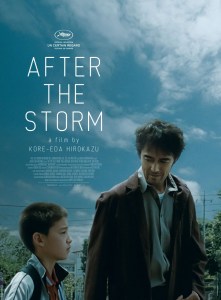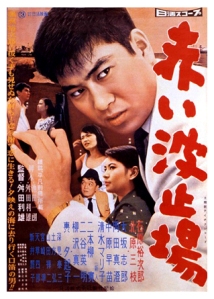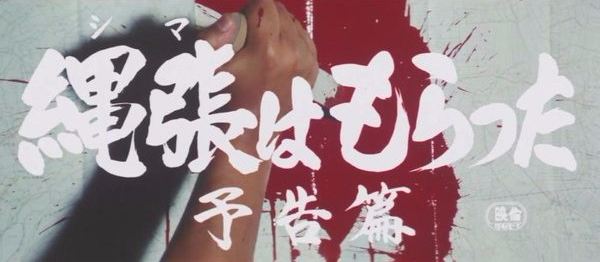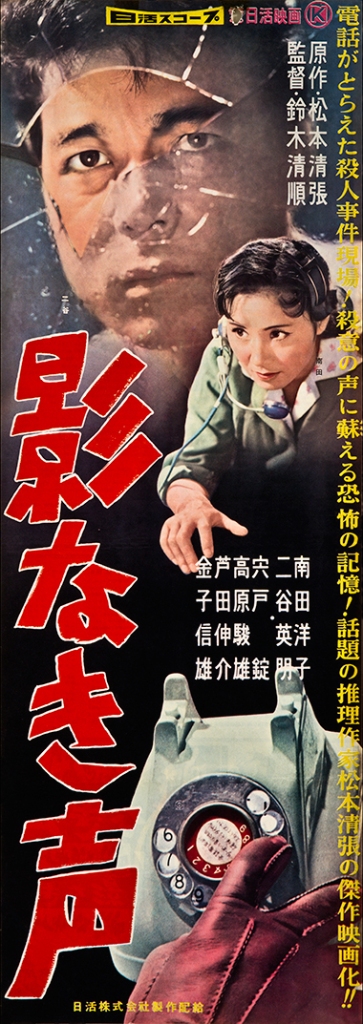The early 1970s were a golden age for gangster cinema.  In the West, there was Francis Ford Coppola’s The Godfather (1972). In the East, Kinji Fukasaku’s Battles Without Honour and Humanity (1973). And then, there was The Yakuza (1974), Sydney Pollack’s fusion of both. Developed from an idea by Leonard Schrader, an American expat living in Japan, and scripted by his brother Paul Schrader (Mishima: A Life in Four Chapters) and Robert Towne (script doctor for The Godfather), it follows several American characters who get tangled up in Japan’s criminal underworld. Robert Mitchum stars as Harry Kilmer, a former US military policeman during the Allied occupation of Japan, who returns to Japan at the behest of his friend Tanner. It seems the yakuza have kidnapped Tanner’s daughter after a shady deal gone awry and Kilmer’s connections are the only way to get her back. That means going back to Tokyo and getting in touch with a yakuza named Tanaka (Ken Takakura, The Bullet Train) indebted to Kilmer. Heavily inspired by contemporary Japanese films watched by the Schraders and no doubt hoping to cash in on the success of The Godfather via “Japan’s mafia”, The Yakuza works surprisingly well as a slow-burn crime thriller that leans heavily on its then-exotic setting.
In the West, there was Francis Ford Coppola’s The Godfather (1972). In the East, Kinji Fukasaku’s Battles Without Honour and Humanity (1973). And then, there was The Yakuza (1974), Sydney Pollack’s fusion of both. Developed from an idea by Leonard Schrader, an American expat living in Japan, and scripted by his brother Paul Schrader (Mishima: A Life in Four Chapters) and Robert Towne (script doctor for The Godfather), it follows several American characters who get tangled up in Japan’s criminal underworld. Robert Mitchum stars as Harry Kilmer, a former US military policeman during the Allied occupation of Japan, who returns to Japan at the behest of his friend Tanner. It seems the yakuza have kidnapped Tanner’s daughter after a shady deal gone awry and Kilmer’s connections are the only way to get her back. That means going back to Tokyo and getting in touch with a yakuza named Tanaka (Ken Takakura, The Bullet Train) indebted to Kilmer. Heavily inspired by contemporary Japanese films watched by the Schraders and no doubt hoping to cash in on the success of The Godfather via “Japan’s mafia”, The Yakuza works surprisingly well as a slow-burn crime thriller that leans heavily on its then-exotic setting.
Tag: gambling
Review: After the Storm (2016)
Continuing the theme of gentle slice of life dramas, this week I watched After the Storm (2016) from director Hirokazu Kore-eda. It follows Ryota Shinoda (Hiroshi Abe), an award-winning novelist who has fallen from grace; divorced, estranged from his son, distrusted by by his sister, and struggling to make ends meet as a private detective while squandering half his earnings on gambling. In the midst of typhoon season, Shinoda is trying to piece the fragments of his life together and collect enough cash to pay his overdue alimony before his ex-wife Kyoko (Yoko Maki) withdraws access to their son. What follows is a surprisingly charming cross-section of Shinoda’s life, a film less about him trying to fix what went wrong than simply get out of freefall.
It follows Ryota Shinoda (Hiroshi Abe), an award-winning novelist who has fallen from grace; divorced, estranged from his son, distrusted by by his sister, and struggling to make ends meet as a private detective while squandering half his earnings on gambling. In the midst of typhoon season, Shinoda is trying to piece the fragments of his life together and collect enough cash to pay his overdue alimony before his ex-wife Kyoko (Yoko Maki) withdraws access to their son. What follows is a surprisingly charming cross-section of Shinoda’s life, a film less about him trying to fix what went wrong than simply get out of freefall.
Review: Red Pier (1958)
Continuing a dive into Nikkatsu’s vault we have Toshio Masuda’s Red Pier (1958).  It stars Yujiro Ishihara as “Lefty” Jiro, a ‘50s gangster laying low in Kobe after killing a civilian over a drug smuggling racket. When he falls for the victim’s sister and starts to let slip his involvement, his low-key criminal underworld starts to come unravelled.
It stars Yujiro Ishihara as “Lefty” Jiro, a ‘50s gangster laying low in Kobe after killing a civilian over a drug smuggling racket. When he falls for the victim’s sister and starts to let slip his involvement, his low-key criminal underworld starts to come unravelled.
Review: Bakumatsu taiyô-den (1957)
This week’s review comes via the Masters of Cinema restoration of Bakumatsu taiyô-den (1957), alternately translated as A Sun-Tribe Myth from the Bakumatsu Era or Sun in the Last Days of the Shogunate. A slice-of-life comedy set in a Shinagawa brothel in the waning days of the Shogunate, just before the Meiji Restoration and the complete upheaval of Japan’s feudal society, the film follows Saheiji (Frankie Sakai, best known to western audiences for his turn in the 1980s Shogun series) as an incorrigible drifter who spins his unpayable debt to the Sagami Inn into a series of odd jobs and cons.
alternately translated as A Sun-Tribe Myth from the Bakumatsu Era or Sun in the Last Days of the Shogunate. A slice-of-life comedy set in a Shinagawa brothel in the waning days of the Shogunate, just before the Meiji Restoration and the complete upheaval of Japan’s feudal society, the film follows Saheiji (Frankie Sakai, best known to western audiences for his turn in the 1980s Shogun series) as an incorrigible drifter who spins his unpayable debt to the Sagami Inn into a series of odd jobs and cons.
Review: Retaliation (1968)
Director Yasuharu Hasebe and Nikkatsu star Joe Shishido return for another yakuza collaboration in Retaliation (1968). Shot in colour, a year after their monochrome work in Massacre Gun, their follow-up has a completely different tone, energy, and style. Shishido, speaking in an interview in his seventies, ruefully commented that all these movies were the same – two gangs fight, and they just had to find a way to make it interesting and different each time. He’s not wrong, but he does himself and his collaborators a disservice: Retaliation is a far superior film to either Massacre Gun or the contemporary Tetsuya Watari vehicle Outlaw VIP, a pitch-perfect take on the late ‘60s yakuza action movie format.

Review: Massacre Gun (1967)
Get ready for a dose of late ‘60s yakuza action with Yasuharu Hasebe’s Massacre Gun (1967).  Like a few of the other Japanese gangster movies I’ve reviewed here on Kino 893, it’s a title that Arrow have rescued from relative obscurity; it only got its Western debut at the Fantasia film festival in 2012. I’ve already written about Hasebe’s work on Stray Cat Rock: Delinquent Girl Boss, a surprisingly fun action movie with an unexpectedly anti-authoritarian vibe. It was through Massacre Gun that I discovered he had trained under (in)famous director Seijun Suzuki as an assistant director, and unlike Delinquent Girl Boss, that heritage is readily apparent here. From the way the film is staged, shot in monochrome, and features Suzuki collaborators Joe Shishido (Branded to Kill) and Hideaki Nitani (Voice Without a Shadow), Massacre Gun positively screams Seijun Suzuki. With that in mind, how does it hold up?
Like a few of the other Japanese gangster movies I’ve reviewed here on Kino 893, it’s a title that Arrow have rescued from relative obscurity; it only got its Western debut at the Fantasia film festival in 2012. I’ve already written about Hasebe’s work on Stray Cat Rock: Delinquent Girl Boss, a surprisingly fun action movie with an unexpectedly anti-authoritarian vibe. It was through Massacre Gun that I discovered he had trained under (in)famous director Seijun Suzuki as an assistant director, and unlike Delinquent Girl Boss, that heritage is readily apparent here. From the way the film is staged, shot in monochrome, and features Suzuki collaborators Joe Shishido (Branded to Kill) and Hideaki Nitani (Voice Without a Shadow), Massacre Gun positively screams Seijun Suzuki. With that in mind, how does it hold up?
Review: Voice Without a Shadow (1958)
Watching foreign language films as an English speaker, you’re necessarily limited by the availability of films that have been translated and released in your local region.  That means the quality and availability of Japanese films with English language subtitles (ignoring for a moment the often very fine work of fansubbers) is not necessarily representative of the quality or breadth of Japanese cinema in general. This is even more true when looking back at older films; while a contemporary film might at least get a limited release in the West, older films by lesser known directors or even by well-respected auteurs can be difficult to find. Even Akira Kurosawa’s outsized shadow over Japanese cinema doesn’t mean it’s possible to find all his films on DVD, let alone restored on Blu-ray. That’s why I’m so thrilled to have outfits like Arrow Video, Masters of Cinema, and the Criterion Collection that put out restored copies of both classic and obscure films. Arrow, in particular, deserves commendation for being much broader in what it will publish; it’s not that every lesser-known work is a forgotten classic, but it would be a real shame to lose these titles forever.
That means the quality and availability of Japanese films with English language subtitles (ignoring for a moment the often very fine work of fansubbers) is not necessarily representative of the quality or breadth of Japanese cinema in general. This is even more true when looking back at older films; while a contemporary film might at least get a limited release in the West, older films by lesser known directors or even by well-respected auteurs can be difficult to find. Even Akira Kurosawa’s outsized shadow over Japanese cinema doesn’t mean it’s possible to find all his films on DVD, let alone restored on Blu-ray. That’s why I’m so thrilled to have outfits like Arrow Video, Masters of Cinema, and the Criterion Collection that put out restored copies of both classic and obscure films. Arrow, in particular, deserves commendation for being much broader in what it will publish; it’s not that every lesser-known work is a forgotten classic, but it would be a real shame to lose these titles forever.
All that is a long preamble to introducing Arrow Video’s “Nikkatsu Diamond Guys” series. With two volumes so far, that’s six lesser known works from some cult directors that might not otherwise see the light of day again. Let’s start with Seijun Suzuki’s Voice Without a Shadow (1958).
Gambling in Japanese Cinema
Watch enough Japanese cinema and you’ll no doubt see some gambling, particularly if you’re watching yakuza movies, but the games involved might seem alien to an outsider’s eye. Japan itself has a strange relationship with gambling: aside from a few specific, seemingly arbitrary exceptions like betting on powerboat racing, gambling is illegal. Historically, gambling is closely associated with Japanese organised criminals, with ‘traditional’ yakuza falling into one of two classes: tekiya, or peddlers, and bakuto, gamblers, though nowadays their criminal enterprises are of course far more broad in scope.
While there are many card, dice, and tile games suitable for gambling on that are popular in Japan, here are three that come up regularly on film: the dice game chou han, Mahjong, and pachinko. If you care to try any of these, digital versions that make following unfamiliar rulesets far easier can be found; in SEGA’s Yakuza series, including the recent Yakuza Zero, playable versions of Mahjong, chou han, oicho kabu, hanafuda games, and many others appear (other games in the series have also featured pachinko or pachislot machines).
